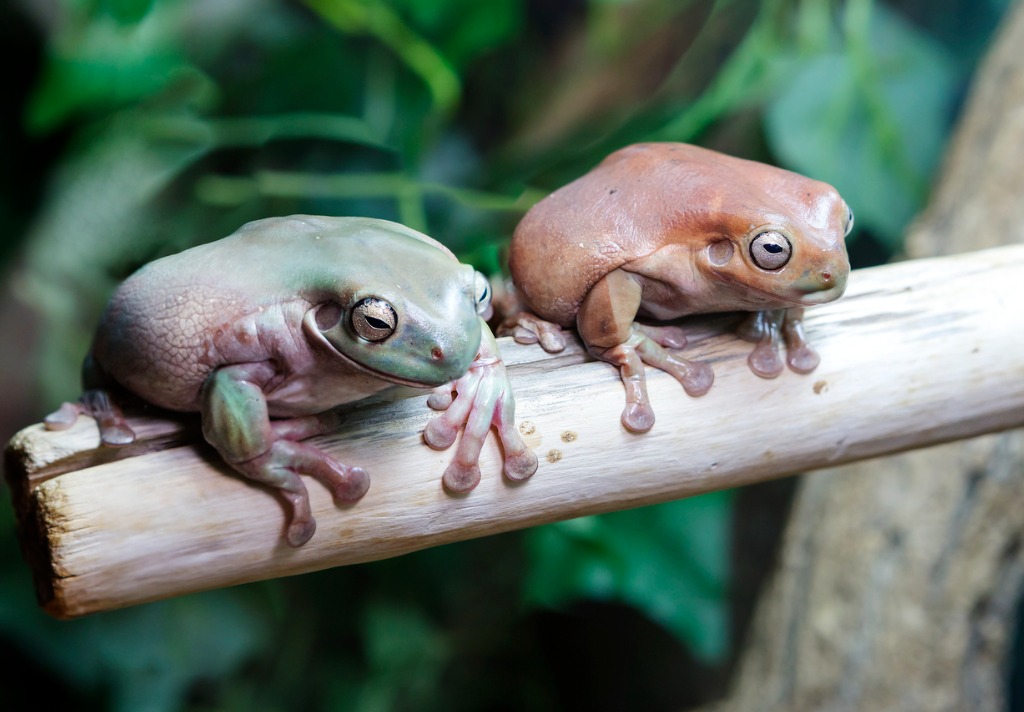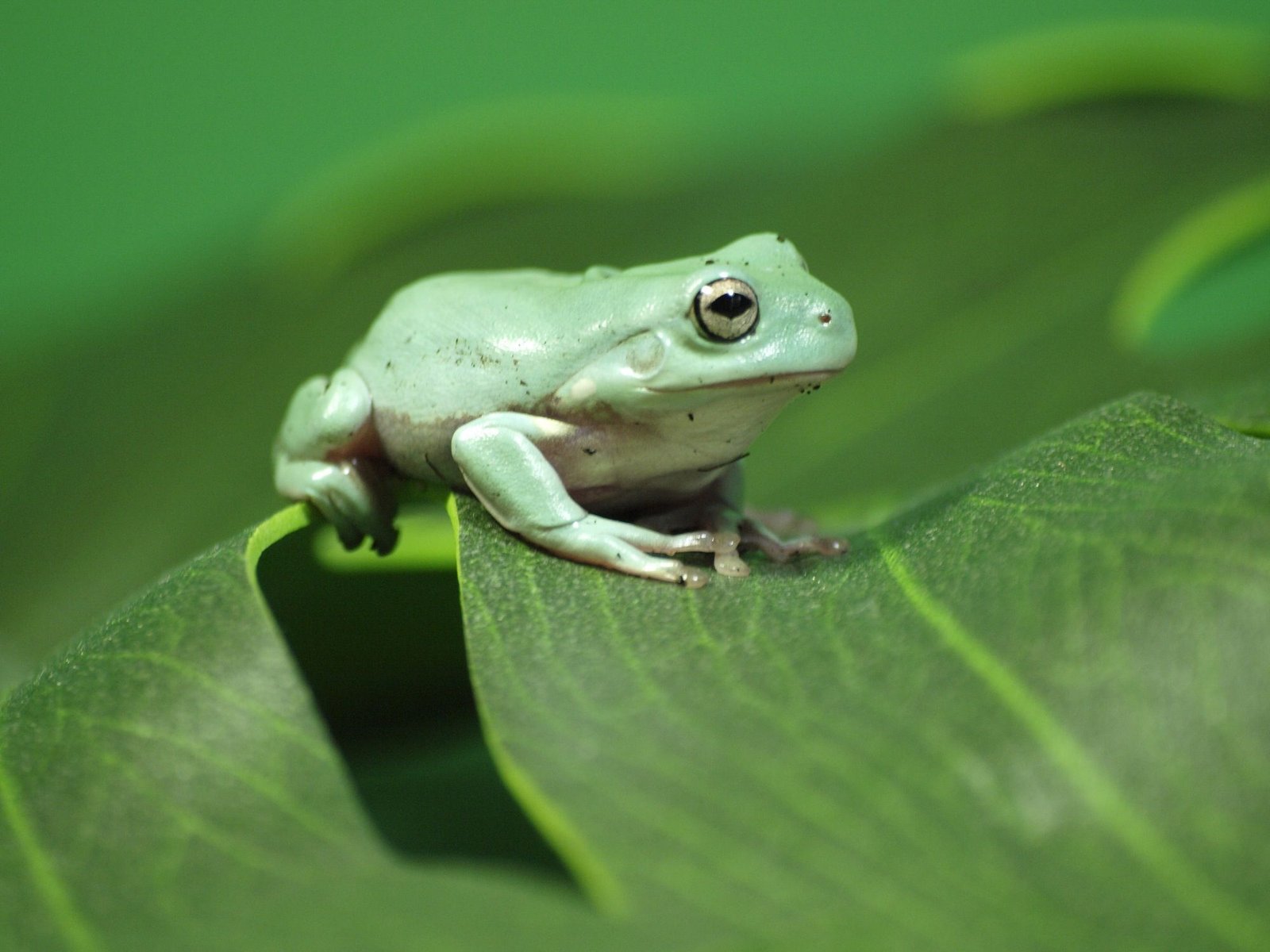White tree frog care requires proper enclosure and temperature control to mimic their natural habitat and promote their health and well-being. These frogs thrive in a humid environment with access to fresh water and a varied diet to meet their nutritional needs.
Providing hiding spots and a secure enclosure is essential for their safety, and regular monitoring of their health and behavior is necessary to address any potential issues promptly. With appropriate care and attention, white tree frogs can live long and healthy lives as captivating pets.
Keeping white tree frogs as pets requires attention to their specific care needs, including creating a suitable enclosure to mimic their natural environment.
Housing And Habitat
White tree frog care begins with proper housing and habitat. Choosing the perfect enclosure is vital. To create the ideal habitat, consider temperature and humidity requirements. Provide proper lighting to ensure your frog’s well-being and natural behavior. Maintain a suitable temperature range and provide a humid environment.
Select an enclosure with adequate space for your frog to move, climb, and hide. Ensure the enclosure has proper ventilation and is escape-proof.
Nutrition And Feeding
White tree frogs have specific nutritional needs that must be met in order for them to thrive. Understanding the frog’s diet is crucial to their care. When selecting the right food, it’s important to provide a variety of options such as crickets, earthworms, and small insects.
Feeding frequency and portion sizes should be monitored to prevent overfeeding or underfeeding. It is recommended to feed adult frogs every 2-3 days, while juveniles should be fed more regularly. To enhance their diet and ensure they receive all the necessary nutrients, supplements and vitamins can be provided.
Carefully following these guidelines will help maintain the health and well-being of your white tree frog companion.
Health And Hygiene
White tree frog care encompasses various aspects, including maintaining a clean environment for their health and hygiene. Regular health check-ups are crucial in identifying common health issues and preventing illnesses. To ensure the well-being of your white tree frog, it’s essential to keep their habitat clean and free from contaminants.
Regularly clean the enclosure, removing waste and replacing water to prevent bacterial growth. Avoid overcrowding, as it can lead to stress and the spread of diseases. Maintain proper humidity levels and provide a balanced diet to support their immune system.
By following these strategies, you can ensure the good health and hygiene of your white tree frog.
Handling And Interaction
Handling and interacting with your white tree frog requires proper techniques. To ensure a safe environment, make sure to handle your frog gently and securely. Encourage social interaction by allowing your frog to explore and interact with its surroundings. Creating enrichment activities such as providing a variety of hiding spots and climbing structures can keep your frog engaged and stimulated.
Remember to always wash your hands before and after handling your frog to prevent any potential transfer of bacteria. By following these guidelines, you can create a positive experience for both you and your white tree frog.
Breeding And Reproduction
The breeding and reproduction cycle of white tree frogs is crucial for their care. Understanding this cycle is essential to provide optimal breeding conditions. Creating the right environment ensures successful reproduction. Giving proper care to the eggs and tadpoles is vital as they develop.
Parental care plays a significant role in the hatchling stage. By following these guidelines, you can ensure the well-being and survival of your white tree frog population.
Common Myths And Misconceptions
White Tree Frog care is often surrounded by myths and misconceptions that can misguide frog owners. Many mistakenly believe that these frogs require a dry habitat, when in reality, they need a humid environment to thrive. Additionally, some people assume that these tree frogs can be fed solely on a diet of insects, neglecting the importance of providing a varied and nutritious diet.
Another common misconception is that these frogs can only survive in warm climates, while they can actually adapt to a range of temperatures. It is essential to debunk these myths and misconceptions to ensure the best care for White Tree Frogs.
By addressing these misconceptions and correcting care practices, frog owners can provide a suitable habitat and proper nutrition to ensure the health and happiness of their beloved pets.
Frequently Asked Questions
The lifespan of White Tree Frogs can range from 10 to 20 years, while their size typically reaches around 4 inches. Cleaning the enclosure once a week is recommended to maintain a healthy environment. It is best to keep multiple White Tree Frogs together only if they are of similar size and temperament.
Signs of stress in frogs include decreased appetite, color change, and excessive hiding. Regular observation and attention to their behavior can help identify signs of distress.

Credit: azeah.com
Frequently Asked Questions For White Tree Frog Care
Are White Tree Frogs Hard To Take Care Of?
White tree frogs are not hard to take care of. They require a suitable enclosure, proper temperature, and regular feeding.
What Do White Tree Frogs Need In Their Tank?
White tree frogs need a tank with proper humidity, temperature, hiding spots, and a water dish.
Are White Tree Frogs Good Pets For Beginners?
Yes, white tree frogs make great pets for beginners due to their ease of care and adaptability.
Do White Tree Frogs Need A Lamp?
Yes, white tree frogs need a lamp for providing proper lighting and regulating their temperature.
How Often Should I Feed My White Tree Frog?
White tree frogs should be fed once every one to two days, with a diet consisting of appropriately sized insects.
What Is The Ideal Temperature For A White Tree Frog’S Enclosure?
Ideally, the temperature in a white tree frog’s enclosure should range between 75 to 80 degrees Fahrenheit (24 to 27 degrees Celsius) during the day and slightly cooler at night.
Can I Handle My White Tree Frog?
While white tree frogs can be handled occasionally, it is best to limit handling to prevent stress and potential injury to the frog.
What Type Of Substrate Is Best For A White Tree Frog?
A moist substrate, such as coconut fiber or sphagnum moss, is ideal for a white tree frog’s enclosure as it helps maintain humidity levels.
Should I Provide A Water Dish For My White Tree Frog?
Yes, a shallow water dish should be provided in the enclosure to ensure the frog has access to water for hydration and soaking.
Can White Tree Frogs Live Together In The Same Enclosure?
White tree frogs can be housed together in a suitable enclosure as long as it is spacious enough and proper care is taken to ensure they have enough food and resources.
Conclusion
Overall, taking care of a White Tree Frog requires attention to their unique needs and providing them with a suitable habitat. Regular watering, monitoring humidity levels, and providing a variety of insects for feeding are essential for their well-being. It is important to remember that these frogs are sensitive to environmental changes, so maintaining a stable and clean living environment is crucial.
It is also necessary to understand their behavior and provide them with proper socialization opportunities. By implementing these care guidelines, you can ensure that your White Tree Frog remains healthy and happy for years to come. Don’t forget to consult with a veterinarian experienced in reptile and amphibian care if you have any concerns.
With the right care, White Tree Frogs can make wonderful pets that provide endless fascination and enjoyment. So, embark on this exciting journey in frog care and create a thriving environment for your White Tree Frog!
